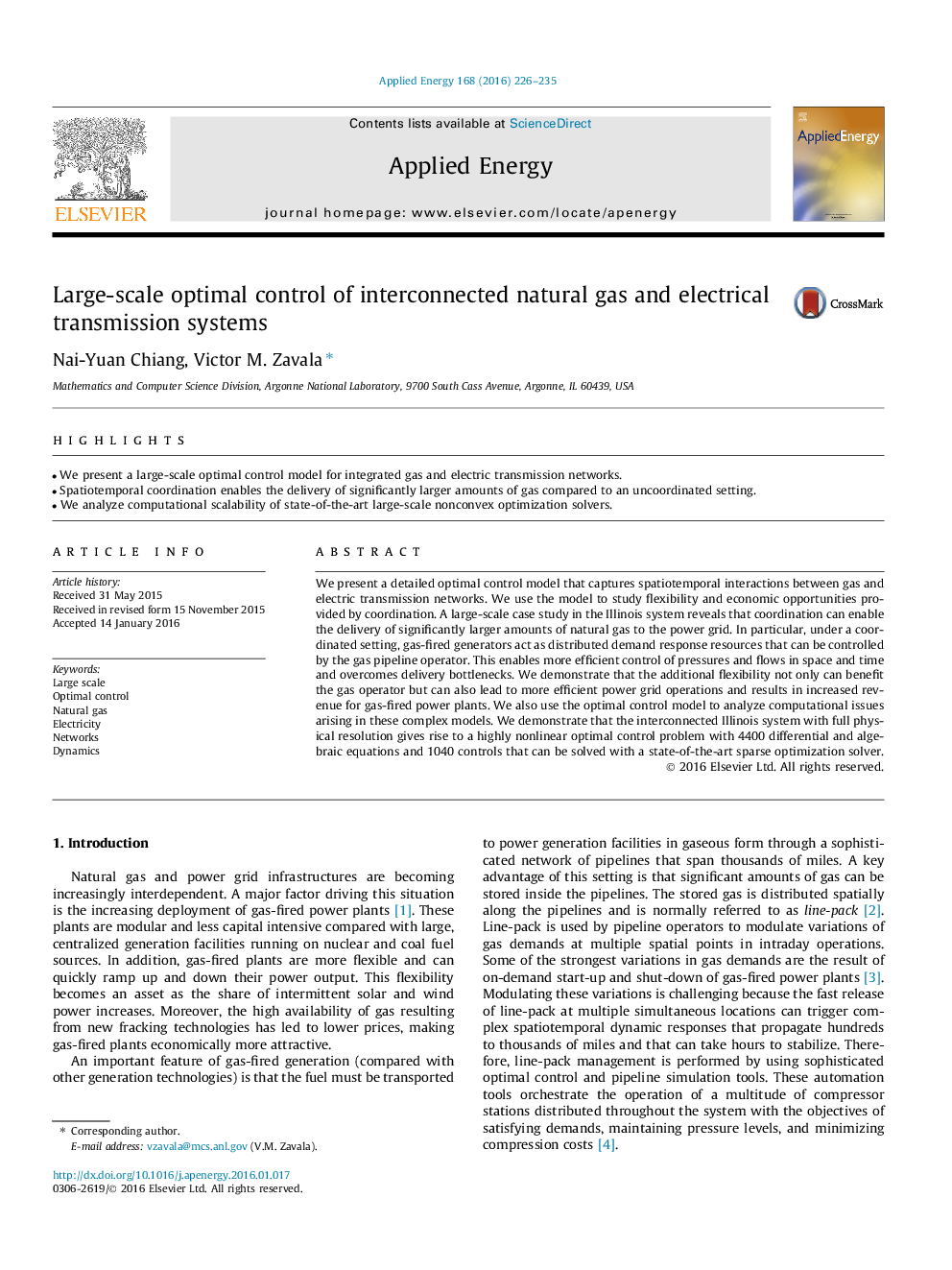| Article ID | Journal | Published Year | Pages | File Type |
|---|---|---|---|---|
| 6683723 | Applied Energy | 2016 | 10 Pages |
Abstract
We present a detailed optimal control model that captures spatiotemporal interactions between gas and electric transmission networks. We use the model to study flexibility and economic opportunities provided by coordination. A large-scale case study in the Illinois system reveals that coordination can enable the delivery of significantly larger amounts of natural gas to the power grid. In particular, under a coordinated setting, gas-fired generators act as distributed demand response resources that can be controlled by the gas pipeline operator. This enables more efficient control of pressures and flows in space and time and overcomes delivery bottlenecks. We demonstrate that the additional flexibility not only can benefit the gas operator but can also lead to more efficient power grid operations and results in increased revenue for gas-fired power plants. We also use the optimal control model to analyze computational issues arising in these complex models. We demonstrate that the interconnected Illinois system with full physical resolution gives rise to a highly nonlinear optimal control problem with 4400 differential and algebraic equations and 1040 controls that can be solved with a state-of-the-art sparse optimization solver.
Related Topics
Physical Sciences and Engineering
Energy
Energy Engineering and Power Technology
Authors
Nai-Yuan Chiang, Victor M. Zavala,
